The Adventures of Sherlock Holmes
Brief Synopsis
Cast & Crew
Alfred Werker
Basil Rathbone
Nigel Bruce
Ida Lupino
Alan Marshal
Terry Kilburn
Film Details
Technical Specs

Synopsis
After he is acquitted of murder charges, the arch criminal Professor Moriarty vows to defeat his rival, Sherlock Holmes, by committing the crime of the century. To accomplish his goal, Moriarty confronts Holmes with two diversions. The first is a letter that he sends to Sir Ronald Ramsgate, guardian of the Crown Jewels and Constable of the Tower of London, proclaiming that the Star of Dehli emerald will never reach the Tower of London. Moriarty's letter brings Sir Ronald to Holmes's apartment, and he asks the detective to be present when the jewel is delivered. Holmes agrees to Sir Ronald's request, and immediately after he leaves, Ann Brandon, who has written Holmes for his advice about attending Lady Conynham's garden party, bursts into his apartment. Ann brings Holmes a drawing that her brother Lloyd has just received, depicting an albatross with a knife piercing its breast. Ann is distraught because this is the same drawing that her father received just before he was murdered. Ann is followed by Jerrold Hunter, her fiancé and the family solicitor, who chides her for being melodramatic. Holmes disagrees, however, and takes Anne's case. Holmes then sends his assistant to watch Hunter, and Watson reports that he has seen the attorney with Moriarty. When Brandon is murdered and Hunter is found standing over the body, Inspector Bristol of Scotland Yard accuses Hunter of clubbing Brandon to death. Holmes informs the inspector that although Brandon was beaten, the real cause of his death was strangulation. Holmes then agrees to help Bristol solve the case in return for freeing Hunter. Soon after, Sir Ronald visits Holmes and is upset to find the detective distracted by Brandon's murder. Nevertheless, Holmes agrees to be at the Tower of London for the delivery of the emerald at ten the next evening. Ann then receives a death threat for the next day, the evening of Lady Conynham's party and the delivery date of the emerald. Holmes delegates Watson to guard the jewel while he goes to the party to watch Ann. That night, Moriarty shaves off his beard in anticipation of defeating his rival, Holmes. Meanwhile, at the Tower of London, Sir Ronald is furious at Holmes's absence when a police sergeant and his men arrive to protect the jewels. When the emerald is delivered, Sir Ronald unlocks the case containing the Crown Jewels and at that moment, the lights go off. In the ensuing chaos, the police disappear with the stone, but in the confusion, drop the emerald and Sir Ronald returns it to the case with the rest of the jewels, then leaves. Moriarty, disguised as the sergeant, then emerges from the shadows and steals the Crown Jewels. Meanwhile, at the party, Ann anxiously awaits the passing of midnight and her death sentence. When Hunter comes to visit, he frightens Ann, who runs into the night. Hunter is then struck unconscious by a man wielding a bola, the instrument that strangled Brandon. After missing Ann with the bola, the man is captured by Holmes and confesses that Moriarty hired him. Realizing that the death threats were a trick to distract him, Holmes rushes to Moriarty's apartment, where he finds a guidebook of the Tower of London and deduces that Moriarty is planning to steal the Crown Jewels. Holmes rushes to the tower, where he engages Moriarty in mortal combat, causing the criminal to fall from a turret to his death. With the threat of danger ended, Ann marries Hunter, and Holmes explains to Watson that Moriarty engaged Hunter in a lawsuit to throw them off the track.

Director

Alfred Werker
Cast

Basil Rathbone
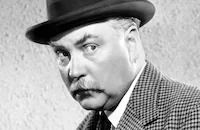
Nigel Bruce

Ida Lupino
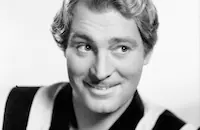
Alan Marshal

Terry Kilburn

George Zucco
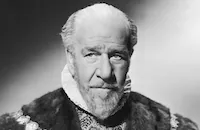
Henry Stephenson

E. E. Clive
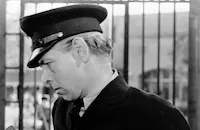
Arthur Hohl
May Beatty
Peter Willes
Mary Gordon

Holmes Herbert
George Regas
Mary Forbes
Frank Dawson
William Austin
Anthony Kemble Cooper

Leonard Mudie

Ivan Simpson

Brandon Hurst
Eric Wilton
Keith Kenneth
Herbert Evans
Dave Dunbar
Montague Shaw

Harry Cording
Denis Green

Charles Irwin
Frank Baker
Gordon Hart
Frank Benson
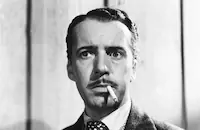
Boyd Irwin
Ivo Henderson
Leyland Hodgson
Bob Stevenson
Robert Cory
Neil Fitzgerald
Robert Noble
Crew
Robert Bischoff
Edwin Blum
Richard Day
William Drake
William Eckhardt
W. D. Flick
Virgil Hart
Roger Heman
Thomas Little
Gene Markey
Cyril J. Mockridge
Hans Peters
Leon Shamroy
Gwen Wakeling
Darryl F. Zanuck

Film Details
Technical Specs

Articles
The Adventures of Sherlock Holmes (1939)
The Adventures of Sherlock Holmes is not based on any of Conan Doyle's original stories and, according to Holmes scholars, only nominally adapted from the credited stage play by William Gillette. The film pits Holmes against his arch-nemesis, Professor Moriarty (played with cool cunning and obsessive drive by frequent screen heavy George Zucco), who escapes a murder charge in the opening scene and proceeds to bait Holmes with a challenge. "I'm going to bring off right under your nose the most incredible crime of the century, and you'll never suspect it until it's too late," he taunts the detective. "It'll be the end of you, Sherlock Holmes." Thus he begins a master plan that involves enigmatic letters, a flustered young beauty, a murdered aristocrat, a South American stalker (complete with an eerie wooden flute that haunts the victims) and the priceless (and fictional) Star of Delhi. Ida Lupino co-stars as the terrified young heiress worried that her brother has been marked for death, a case that Holmes takes up despite his promise to oversee the transfer of the jewel to the Tower of London. Needless to say, Moriarty's fingerprints are all over these seemingly disparate cases, but the mystery is just exactly how and why.
The elaborate scheme is more convoluted than Conan Doyle's elegantly constructed stories and Lupino's relentlessly suspicious fiancé (Alan Marshal), who continues to make light of the death threats even after one has been carried out, is more narrative contrivance than logical storytelling. But they are minor issues in an eventful script and a handsomely mounted film. Victorian London is vividly (if quaintly) recreated on the 20th-Century-Fox backlot, with hansom cabs clopping down cobblestone streets and gaslight flickering in street lamps. The fog creeps into the nocturnal gloom as if on cue, blanketing the film in an ominous tension, and the climax sweeps us into the castle-like environs of the Tower of London, recreated for the film with all the gothic atmosphere of the costume adventures in which Rathbone played the dastardly aristocratic villain.
Rathbone embraces the character of Holmes from the opening scenes. His resemblance to the Sidney Paget illustrations in the original Strand publication is startling, but his incarnation is far more than visual. He brings to the screen the offhanded arrogance that Holmes so memorably displayed in the stories, and tempers it with his delight in conundrums and challenges. He's exacting, exasperating, charming, devoted to Watson and oblivious to all else while concentrating on an experiment. Rathbone makes Holmes' violin scratching an endearing eccentricity and carries off Holmes' predilection for disguises and role-playing with an actor's delight. In The Adventures of Sherlock Holmes, Holmes indulges in a flamboyant bit of social theater and Rathbone executes the scene with such flair that even diehard fans won't see through the disguise until he sloughs off the accent and gives the character away.
If Rathbone is celebrated as one of the great screen Holmes, fans have been less happy with Nigel Bruce, whose Dr. John Watson is something of a lovable buffoon. The Adventures of Sherlock Holmes gives us Watson before he has tipped completely into caricature. He delivers moments of comic relief and Holmes chides him at times, but Watson is completely loyal and unfailingly helpful, and he is clear-headed enough to remind Holmes to keep his eyes on the Star of Delhi and not get distracted with the murders, a mystery that holds far more appeal to the detective. Rathbone defended Bruce's Watson in his autobiography: "There was an endearing quality to his performance that to a very large extent, I believe, humanized the relationship between Dr. Watson and Mr. Holmes."
The film also revived the faltered career of ingénue Ida Lupino, whose Hollywood roles were dwindling. It was in fact a radio performance on Orson Welles' "Mercury Theatre of the Air" that brought her to the attention of a Fox casting agent, who was impressed with her clear voice and mid-Atlantic delivery. Curiously, the British born actress did not use her native accent in the London-set film, but delivers instead the same mid-Atlantic tenor of her earlier films. The role spurred her screen career back to life and she landed a contract at Warner Bros., a studio that saw the tough dame beneath the ingénue trappings and gave her defining roles in films such as High Sierra (1941) and The Man I Love (1947).
Through what can only be seen in retrospect as mishandling by Fox, this handsome studio production was relegated to second bill status upon release and considered a failure by the studio, which cancelled its planned series of Holmes adaptations. Yet Rathbone and Bruce proved popular enough to recreate the characters for a radio series and, in 1942, a revival of the screen series by Universal, which brought the character up to the present to solve mysteries in World War II-era England. For all the villains played by Rathbone in films such as The Sea Hawk (1940) and The Adventures of Robin Hood (1938), he is still best remembered for his heroic Holmes.
Producer: Darryl F. Zanuck (uncredited)
Director: Alfred Werker
Screenplay: Edwin Blum; William Drake; William Gillette (play "Sherlock Holmes"); Arthur Conan Doyle (characters, uncredited)
Cinematography: Leon Shamroy
Art Direction: Richard Day, Hans Peters
Music: Robert Russell Bennett, David Buttolph, Cyril J. Mockridge, David Raksin, Walter Scharf (all uncredited)
Film Editing: Robert Bischoff
Cast: Basil Rathbone (Sherlock Holmes), Nigel Bruce (Dr. Watson), Ida Lupino (Ann Brandon), Alan Marshal (Jerrold Hunter), Terry Kilburn (Billy), George Zucco (Professor Moriarty), Henry Stephenson (Sir Ronald Ramsgate), E.E. Clive (Inspector Bristol), Arthur Hohl (Bassick), May Beatty (Mrs. Jameson), Peter Willes (Lloyd Brandon), Mary Gordon (Mrs. Hudson).
BW-85m.
by Sean Axmaker

The Adventures of Sherlock Holmes (1939)
The Complete Sherlock Holmes Collection on DVD
Many of the films in this set were reviewed on TCM's website when they were first released by MPI. Those reviews, still available in the site's archive, may be referred to for more details. But briefly...Basil Rathbone and Nigel Bruce starred as Sherlock Holmes and Dr. Watson in fourteen films over eight years. The first two, The Hound of the Baskervilles and The Adventures of Sherlock Holmes, were produced by 20th Century Fox in 1939 and were set in the Victorian London period of Sir Arthur Conan Doyle's stories. In 1942 Universal acquired the rights, borrowed the actors, and launched its own 12-film series which placed Holmes and Watson in present-day London. In these movies Holmes and Watson sometimes aid the war effort, but usually they solve mysteries which are composed of bits and pieces of actual Conan Doyle stories. These are B pictures which look like A's, thanks to excellent production values. Their entertainment quotient is high and they have always played well to audiences of all ages.
UCLA did an amazing job restoring the Universal titles. In some cases, original film elements were gone and the only things to work with were dupes. In others, elements were decomposing into vinegar and were rescued in the nick of time. In an extra retained from the 2004 release, UCLA preservation officer Robert Gitt offers a brief overview of the restoration process. It's fascinating to hear what went into saving and restoring even the simplest things, like the "The End" card of some titles, and we can thank our lucky stars that Gitt and UCLA are around to care about such things. Other retained extras include superb photo galleries done as montages to classical music, remarkable newsreel footage of Doyle discussing his creation, and commentaries on a few titles by film historian David Stuart Davies, who makes sure to touch on all the films in the series.
The one new extra is a commentary on Dressed to Kill (1946) featuring 91-year-old Patricia Morison, the film's leading lady, who recalls the picture to film historian Richard Valley and moderator David Gregory. Dressed to Kill (1946) was the last of the Basil Rathbone titles, and it is a strong and satisfying entry. Morison is the villainess who does indeed walk around in glamorous outfits, "dressed to kill." A talented actress, Morison never got the major parts she deserved. In this movie, she lends great charm and radiance to her role, making it much more interesting and attractive than it would have been if played simply "evil."
In her elegant and articulate commentary, she speaks delightfully of everything from Ronald Colman's Beverly Hills Christmas parties to Nigel Bruce: "That was one of the dearest people - Willy Bruce. He was exactly the way he played. It was not an act." Of Rathbone, she says he often wondered aloud on the set, "Why am I doing this?" It's true Rathbone was aching to leave the Holmes character. He did after this picture, and his career started a steady decline. Morison also appeared in Persons in Hiding (1939), Hitler's Madman (1943), Fallen Sparrow (1943), Song of Bernadette (1943), and Song of the Thin Man (1947), among other films, and while she does not discuss all these titles, she does go into a few. She says that she soon left Hollywood to go back to Broadway because the studios wouldn't give her any singing roles. A trained singer, she was quickly hired by Cole Porter to play Kate in the original Broadway production of Kiss Me Kate. Overall, Sherlock Holmes fans will enjoy this commentary - it's great to hear from anyone who worked with Rathbone and Bruce on these films.
There are a few faults with this new box set. The liner notes by Richard Valley that accompanied the original DVD releases are nowhere to be found, which is a real shame because they were superbly written and enlightening. Also, the nice cover artwork of the earlier releases has been eliminated, and the case design has been replaced by a box-like container from which one can pull out several plastic racks holding the DVDs. The racks are held together by a single piece of Scotch tape which easily comes apart. The entire package is surprisingly flimsy and threadbare.
At least these are minor quibbles. One thing's for certain: you will not find better DVD prints of these movies anywhere else. Because the titles are in the public domain, many cheapie DVD distributors legally sell their own versions at lower prices. MPI's price is higher, though the price per title is now a lot better than it was in 2004. But you get what you pay for, and if an unappealing case is the worst part of the deal, you're still in pretty good shape. For anyone who did not acquire these movies from MPI the first time around, the new box set is highly recommended.
For more information about The Complete Sherlock Holmes Collection, visit MPI Home Video. To order The Complete Sherlock Holmes Collection, go to TCM Shopping.
by Jeremy Arnold
The Complete Sherlock Holmes Collection on DVD
The Adventures of Sherlock Holmes
One might be surprised to learn that despite the presence of Rathbone and Bruce in all 14 films, the first two and last 12 were produced by two different studios. Why did Twentieth Century Fox stop making these films after The Adventures of Sherlock Holmes? A little backstory reveals the answer.
The Hound of the Baskervilles was based faithfully on Sir Arthur Conan Doyle's novel of the same name. The Adventures of Sherlock Holmes was drawn not directly from a Doyle story but from William Gillette's 1899 play Sherlock Holmes. The play had combined portions of Doyle's A Scandal in Bohemia and A Study in Scarlet, but those elements were almost entirely deleted from the Adventures screenplay. A new plot was developed which had Holmes's nemesis Prof. Moriarty attempting to steal the Crown Jewels from the Tower of London. Both films were successful, and Darryl Zanuck announced Fox's intention to keep making a Holmes picture every year. But Arthur Conan Doyle's estate didn't like the liberties taken with Adventures, which bore very little resembalnce to any of Doyle's work, and they now required that Fox only adapt the original stories and novels. Fox didn't agree to this and so the series was dropped.
Three years later, in 1942, Universal was able to reach agreement with the Doyle estate on new Sherlock Holmes films set in the modern era, and Rathbone and Bruce were brought back. In reality, Universal had little choice but to use Rathbone and Bruce because they'd continued their roles over the previous three years on a weekly radio program and the public linked them to the characters quite firmly. The actors would ultimately record well over 200 of the radio shows together until 1946. Meanwhile, they made a dozen more films and entrenched themselves forever in the roles.
The Adventures of Sherlock Holmes boasts a wonderful supporting cast, including Ida Lupino in a strong performance just one year before hitting it big in They Drive By Night and High Sierra. Making an even bigger impression, however, is George Zucco as Moriarty. Three actors would ultimately play the Professor in three different films of the series, and while Rathbone pronounced Henry Daniell the best (he played Moriarty in The Woman in Green), most fans prefer Zucco. He is simply wonderful, bringing a cool, calm menace to every scene. A famous 1930s and 40s movie villain, Zucco was a noted actor and teacher at London's Royal Academy of Dramatic Art before he settled in Hollywood in the 1930s. There he alternated between starring roles in B-horror films (like Fog Island and The Mummy's Hand) and supporting roles in larger A-productions (like The Pirate and Madame Bovary).
In addition to Rathbone and Bruce, Mary Gordon appeared in the first two films as Mrs. Hudson, 221B Baker Street's trusty housekeeper, and she was brought back for the Universal films. Mrs. Hudson is sort of like the Miss Moneypenny of the Sherlock Holmes series. She appears in every film, never has much to do, and yet is always a welcoming, comforting presence.
As one of the only two films of the series to be set in Victorian London, Adventures is very atmospheric, with many night scenes filled with creepy fog and shadows. The DVD transfer looks great, with a beautiful picture and crisp sound. The liner notes and audio commentary by Richard Valley are very in-depth. The liner notes in particular are fascinating to read after watching the film, for they include a reproduction of pieces of the script that never made it into the film and which tie up some loose plot threads. Valley also points out the interesting fact that while the most famous line of dialogue associated with Sherlock Holmes does appear in this film and, in variations, throughout the series, it never once appeared verbatim in any of Doyle's stories. If for some reason you don't know which line I am referring to, then you have found another good reason to watch this DVD. It's elementary, my dear reader!
To order The Adventures of Sherlock Holmes, go to TCM Shopping.
by Jeremy Arnold
The Adventures of Sherlock Holmes
Quotes
Trivia
Although William Gillette's name appears in the credits, this film bears little or no resemblance to his 1899 play "Sherlock Holmes".
Notes
The working title of this film was Sherlock Holmes. This was the second of Fox's Sherlock Holmes series starring Basil Rathbone and Nigel Bruce. Modern sources note that although the onscreen credits state that the film is based on the William Gillette play, the plot of the film bears little resemblance to the play. In story conferences contained in the Twentieth Century-Fox Produced Scripts Collection at the UCLA Theater Arts Library, Darryl Zanuck insisted that the film begin with Moriarity conceiving his crimes against Holmes. Zanuck directed that the story concentrate more on suspense and less on "cops and robbers," and he also suggested Cecil Kellaway for the role of Ronald Ramsgate, Forrester Harvey for Bassick and Lionel Atwill for the Justice. For additional information about the series and other films featuring the characters, consult the Series Index and see entry for The Hound of the Baskervilles and Sherlock Holmes.














